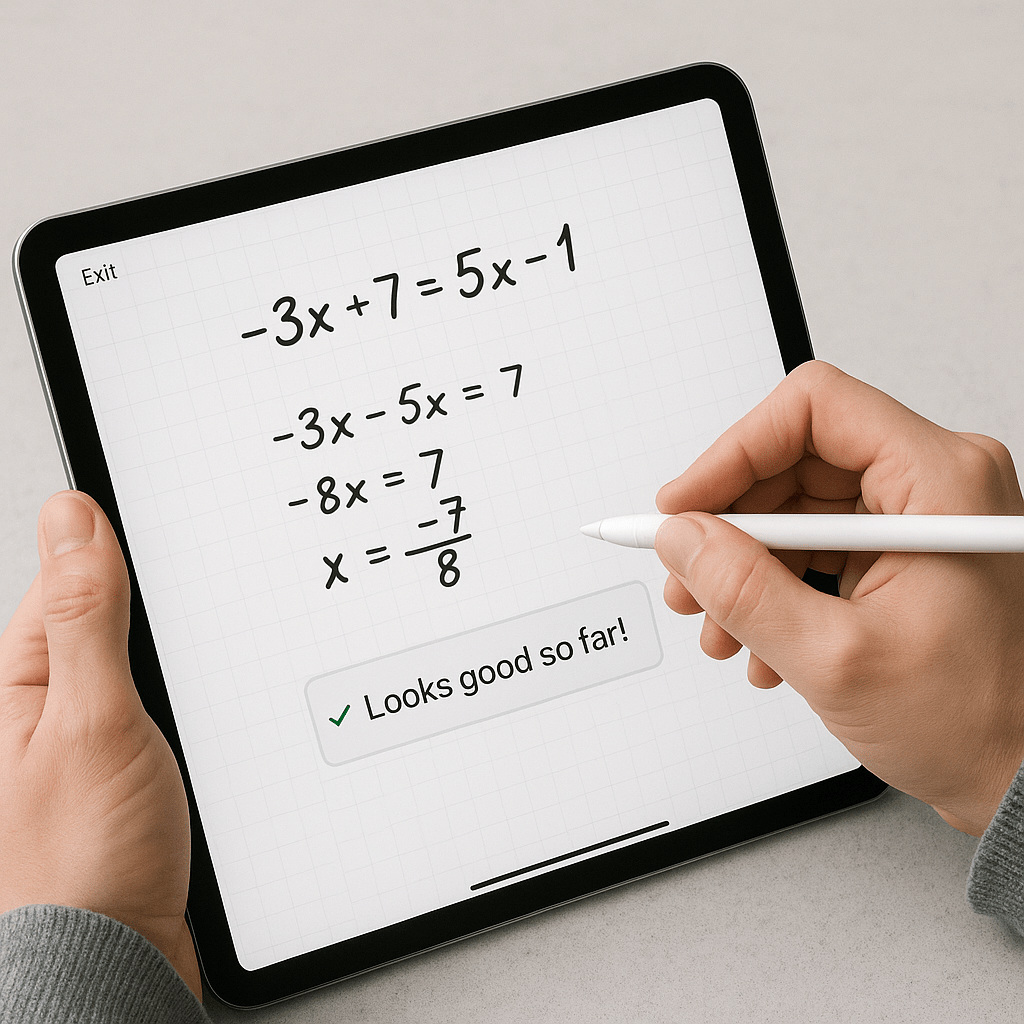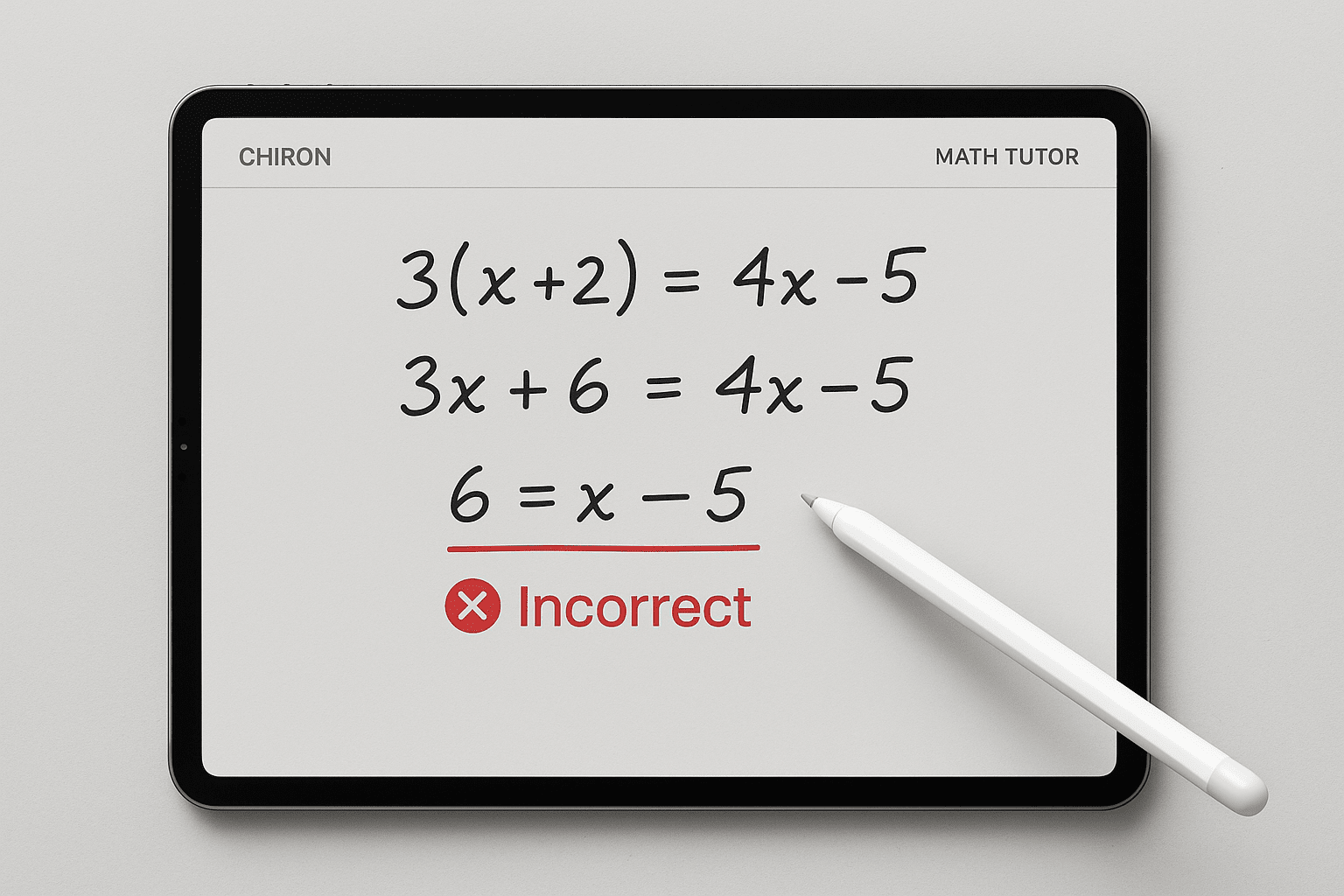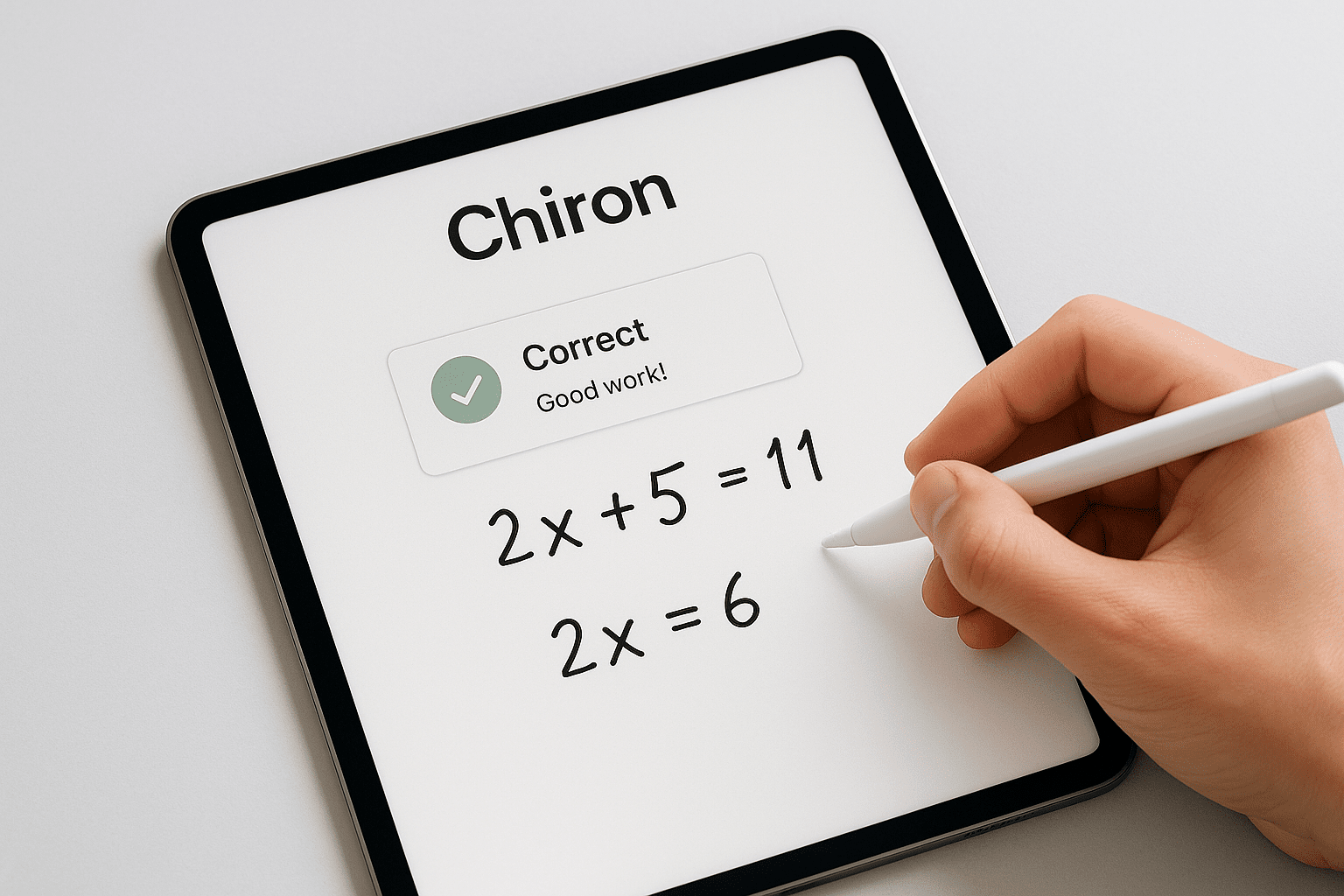Grammarly for Algebra? How Chiron Is Reinventing Math Education
Chiron is an innovative iPad application poised to revolutionize the way students learn mathematics, particularly algebra - by offering real-time feedback on handwritten math work. Described as “Grammarly for math,” Chiron interprets math as it is written, analyzing every stroke and providing accurate, immediate feedback to students. This approach bypasses the traditional pitfalls of AI tutors and instead focuses on a one-on-one, interactive, and deeply personal form of math instruction.
Founded in 2023 by Oxford math graduates James and Max Booth, Chiron is the culmination of over a decade of tutoring experience and cutting-edge technical development. The app is more than a digital worksheet or chatbot—it’s a reimagined classroom assistant that brings a near-human understanding of math into the hands of learners via iPad.
What Problem Is Chiron Solving?
Despite rapid advances in generative AI, current educational tools often fall short, especially in math instruction. Traditional language models may excel at solving problems but struggle to analyze the process of a student’s work. This is particularly problematic in math, where understanding how a student arrives at a solution is just as important as the answer itself.
Chiron identifies three fundamental gaps in existing AI tutors:
- Math is predominantly handwritten, not typed or spoken.
- Math learning is based on practice, not passive reading.
- AI fails to detect errors in logic or notation, often offering incorrect feedback.
Many students abandon AI tutors because they misinterpret or oversimplify complex, line-by-line math reasoning. Chiron directly addresses this frustration, offering students the clarity they need to build confidence and skills in math.
How Does Chiron Work?
Chiron leverages tens of thousands of lines of Python and Wolfram Language code to power its intelligent feedback engine. When a student writes a mathematical expression on the iPad, Chiron:
- Captures stroke data in real-time (< 300ms latency).
- Converts the strokes into LaTeX—a universal format for mathematical notation.
- Parses the LaTeX expression and maps it to a known problem structure.
- Uses symbolic logic to assess correctness, detect subtle mistakes, and offer graded feedback—ranging from completely correct to partially wrong to entirely incorrect.
Unlike LLM-based approaches that “guess” meaning based on language patterns, Chiron performs precise symbolic analysis, offering accuracy and nuance that language-based models cannot achieve.
This approach is especially effective because students often make small, unintentional errors—missing a minus sign, forgetting parentheses, or swapping variables. Chiron highlights these in real-time, much like Grammarly flags typos or grammatical slips, but with mathematical logic.
Why Focus on the iPad?
The iPad provides an ideal medium for free-form handwritten math. Unlike typing equations into a calculator or desktop tool, writing on an iPad closely mirrors the real-world classroom or tutoring experience. It’s intuitive, tactile, and removes the friction that often comes with less natural interfaces.
With Chiron, students don’t need to switch between a calculator, a textbook, and an AI chatbot. Everything happens in one seamless, fluid interface that replicates a whiteboard or notebook, enhanced by instant AI assistance.
The founders’ decision to focus on this specific device reflects a deeper belief: the future of learning will be personalized, interactive, and visual. The iPad isn’t just a device—it’s the platform where analog learning meets digital intelligence.

What Makes Chiron Different From Other AI Tutors?
Many AI tutors rely on language models (like GPT-4) to generate explanations, solutions, or responses to student queries. While powerful, these models are often:
- Too slow to provide instant feedback.
- Inconsistent in interpreting step-by-step reasoning.
- Unreliable in detecting where and why a student went wrong.
Chiron does not attempt to replace a teacher with a chatbot. Instead, it serves as an ever-present assistant that reinforces student learning through symbolic computation, not fuzzy approximations.
Rather than generating solutions, it performs a deep structural comparison between what the student wrote and the expected logical path. This enables nuanced corrections and targeted insights into specific misconceptions. For example, Chiron can flag when a student cancels terms incorrectly or distributes a minus sign improperly—errors that are often invisible to language models.
Who’s Behind Chiron and What’s Their Vision?
Chiron was founded by James and Max Booth, two brothers from England who studied mathematics at Oxford. Both founders have spent over a decade tutoring students, which gives them rare insight into the emotional and cognitive challenges learners face with math.
James focuses on the technical side, exploring neurosymbolics to enable machines to understand math structurally. Max is committed to making math accessible and enjoyable for all students, especially those who feel intimidated or left behind by traditional instruction.
Their shared belief is simple but powerful: the future of learning is 1-on-1. They envision Chiron as the first step toward creating AI-powered tutors that work like human ones—responsive, adaptive, and emotionally supportive.
How Is Chiron Shaping the Future of Education?
Chiron’s launch comes at a critical moment in the evolution of education technology. As schools and tutoring centers adopt more AI-driven tools, there’s increasing pressure to ensure these systems are not just scalable but effective.
Chiron’s commitment to precision, real-time feedback, and thoughtful design positions it as a frontrunner in a new class of educational apps that do more than digitize learning—they transform it.
This transformation is especially important in math, where millions of students fall behind every year due to poor instruction, lack of confidence, or inaccessible support. By offering personalized help that mirrors a tutor’s understanding, Chiron opens up new possibilities for:
- Self-paced learning at home.
- Scalable, AI-enhanced instruction in classrooms.
- Data-driven intervention for struggling students.
- More equitable access to high-quality math education worldwide.
What’s Next for Chiron?
While Chiron already handles a wide array of algebra problems, the team is rapidly expanding its capabilities. Future updates will likely include:
- Support for more advanced topics like calculus and linear algebra.
- Deeper integrations with classroom platforms.
- Tools for teachers to monitor student progress.
- Expanded device support beyond the iPad.
The company is still early-stage, but their ambitions are clear: to build the first truly intelligent math tutor that understands student reasoning as well as a human teacher.
Their ultimate goal isn’t just better math scores. It’s changing how people feel about math, making it less intimidating, more interactive, and genuinely enjoyable.

Conclusion: Why Does Chiron Matter Now?
Chiron represents a major leap forward in the use of AI for education, not because it’s flashy, but because it’s practical. By solving the hard problem of real-time math understanding through symbolic reasoning, Chiron avoids the pitfalls of overhyped chatbots and focuses on what students actually need: feedback, clarity, and confidence.
As education continues to shift toward more personalized and digital-first experiences, tools like Chiron will define the future of how we learn, not just math, but any subject that demands structured thinking and practice.
With the right vision, thoughtful design, and technical excellence, Chiron is well on its way to becoming the Grammarly of mathematics—and much more.

